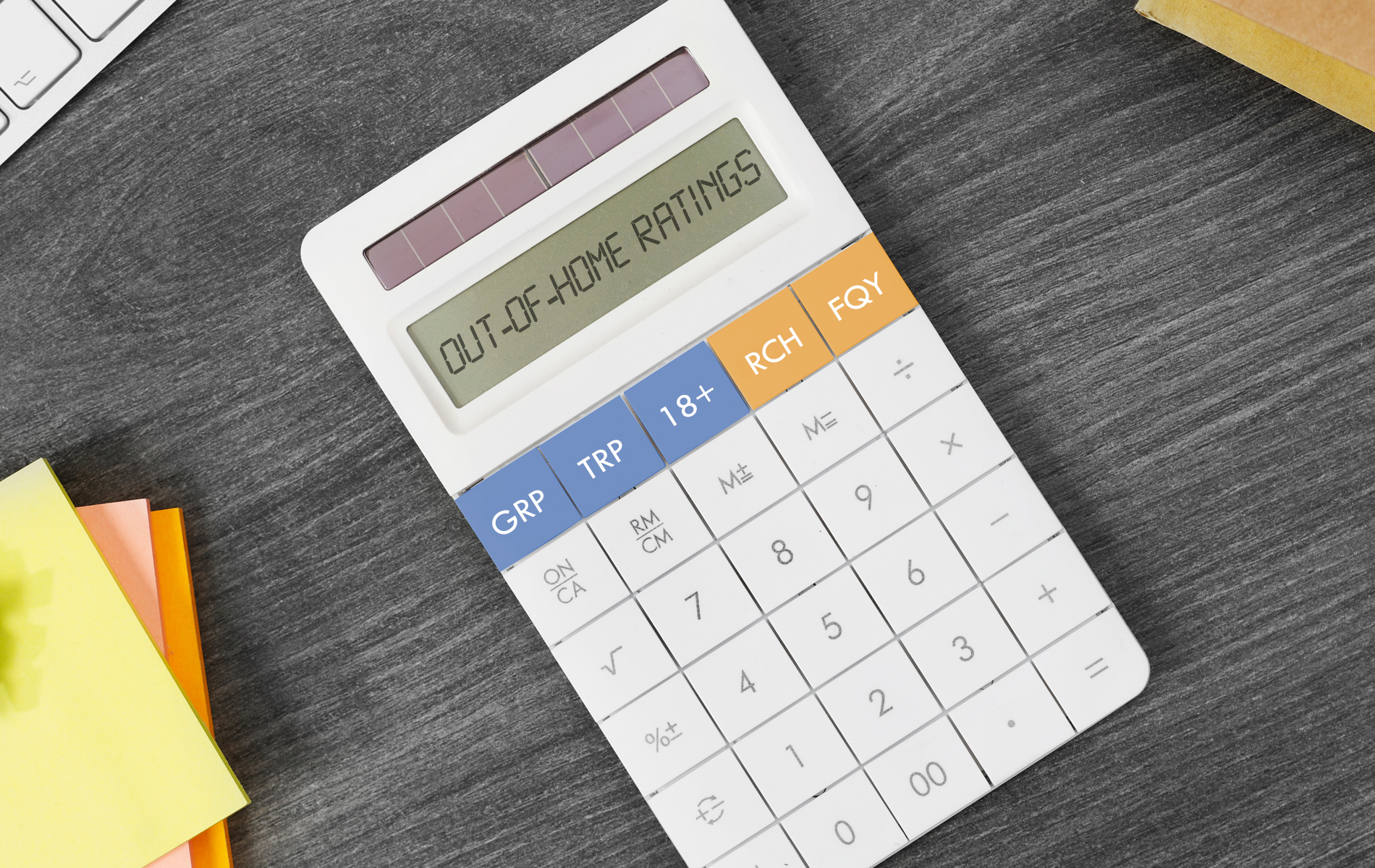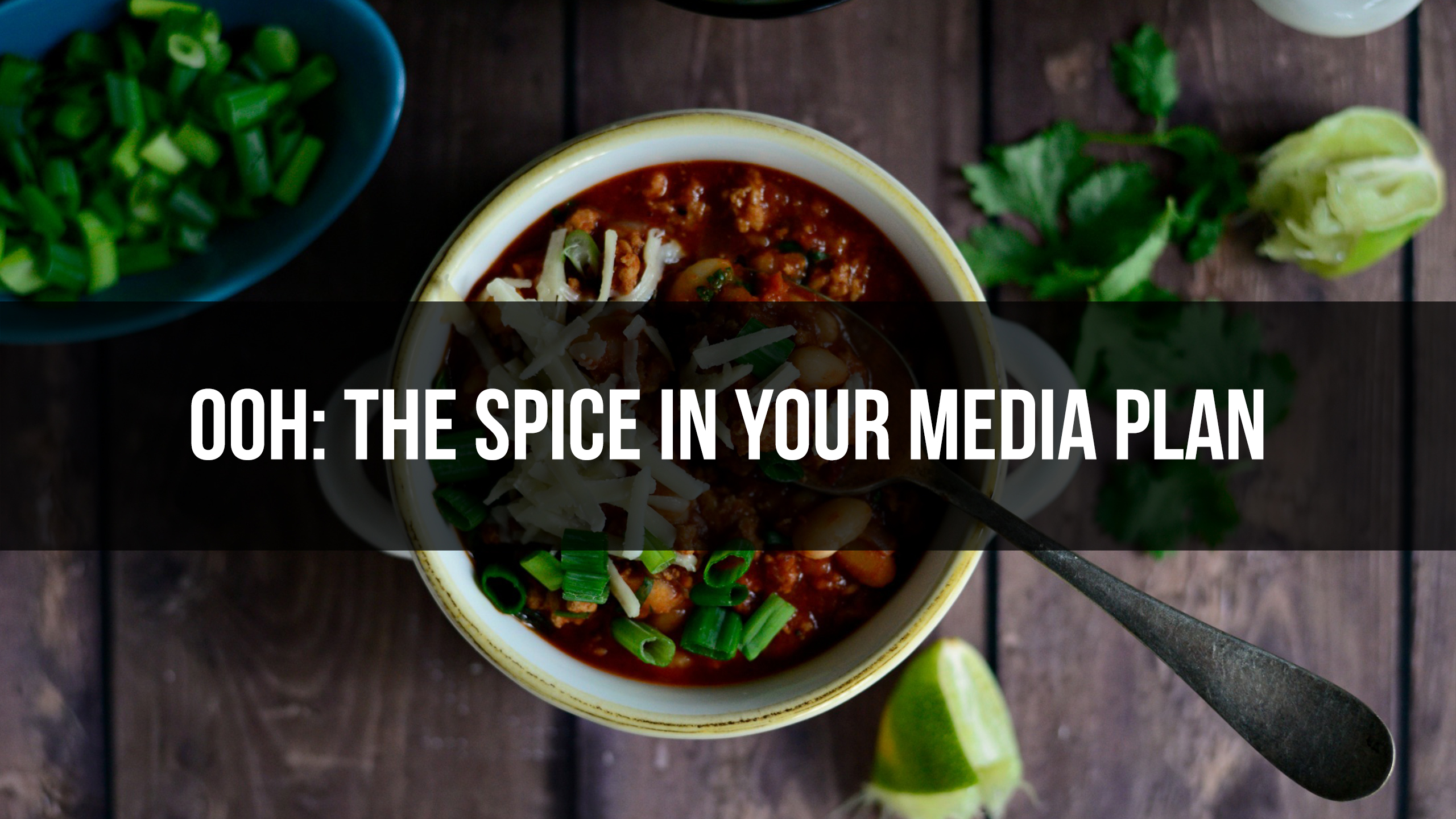The out of home advertising industry took a great leap forward in 2010 when TAB published its long awaited EYES On Ratings, later to be called TAB OOH Ratings. A collaborative effort between outdoor advertising suppliers and leading research and software companies, the system moved out of home measurement from gross to target impressions and from daily to weekly ratings, enabling the medium to finally be aggregated into multi-media planning systems.
Today, as the industry navigates another critical point in its research history, seeking new leadership and a refocused mandate for TAB following the retirement of Dr. Joseph Philport, it would be wise to consider what is working/ what is still needed from the point of view of advertisers and their agencies, so as future priorities are set, these are high on the action plan.
What we love
A currency that is consistent with other media.
No matter how cool the executions or how much an advertiser knew intuitively that out of home was right for their brand or launch or ongoing plan, having only DECs to account for the media investment was always problematic. Almost everyone outside of the small circle of outdoor advertising specialists were unclear what those numbers really meant, and even those on the inside used sizable adjustment factors since the numbers seemed so inflated. TAB OOH Ratings enabled two benefits simultaneously: a consistent currency and at levels that were logically sound. A boon for planner, buyer and seller alike!
A currency that is better than the rest.
The ability to measure more than just traffic counts goes way beyond what other traditional media can offer. Of course the methodology included circulation, but it also took into account other key factors including: visibility research and eye tracking, census data, and travel data, including trip origins and destinations. So not only did the numbers become tighter, they also were true advertising ratings and not just media ratings.
A currency that allowed clear and compelling competitive analysis.
Lastly, you could finally compare apples to apples: GRP to GRP, TRP to TRP, total impressions to total impressions and such comparative plans inevitably tipped in out of home’s favor, this time on solid ground.
While definitely a huge step in the right direction, we’re not there yet and some significant areas require attention to keep the positive momentum going and to meet the needs of an ever changing, dynamic media marketplace.
What we need:
Mandatory education.
As part of the roll out of TAB OOH Ratings, an intensive education effort was initiated by TAB, with the active assistance and involvement of the OAAA, to insure that all vested parties understood and were conversant with the new ratings system.
Sadly, not everyone is doing their homework and mastery of the system is spotty at best, particularly where you’d expect it to be strong: at the supplier level. Of necessity, planners and buyers quickly learned the ropes in order to present and defend recommendations to their brands. Yet at the seller level, there are various degrees of mastery – from A+ to well below passing. This is not acceptable, nor will it do the industry good to cling to old patterns since that’s how ‘it’s always been done’.
Outdoor advertising still remains undervalued and underutilized and while not the only reason, this weakness may well be one.
Faster roll-outs.
We all know Rome wasn’t built in a day but that was then and this is now. Technological advances and ready sources of data permit all manner of tracking and analysis and perhaps we might consider other methods than currently being deployed IF they can provide more timely outcomes.
Alternately, we might consider collaborating with other research companies to produce the ratings rather than invent from scratch. Having superior and robust ratings is certainly desirable but we must consider cost effect ratios in the process.
A currency that brings ALL out of home media together.
Finally, we need to find a common ground to measure all outdoor advertising media. Yes, this is a tall order but it needn’t be a pipe dream. If we want to speak about OOH as this multi-faceted, dynamic force that can do it all, we need to provide the measurement tools to make it easily doable, especially in an age where accountability is essential.
Perhaps we might set up measurement guidelines for alternative choices that met set standards, in lieu of a comprehensive system. We need something and now’s the time to consider it. Certainly if the continent of Europe could get its many countries to agree to a common currency, certainly we can.





